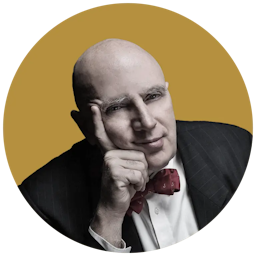The Arrival of a Welcome Visitor
This article is from the archive of The New York Sun before the launch of its new website in 2022. The Sun has neither altered nor updated such articles but will seek to correct any errors, mis-categorizations or other problems introduced during transfer.

Strings are a latecomer to the jazz party, and more often than not, they are treated like a visitor no one invited. String sections are often held up as examples of what jazz is not – they are classical music, or pop music, or movie music – and when a jazz musician employs a string section, it’s generally taken as a sign that he’s trying to reach the pop marketplace or aspiring to the academy.
David Murray’s latest album, “Waltz Again” (Justin Time), however, seamlessly integrates strings into the jazz idiom. Not only does this saxophonist and composer deftly straddle the divides between pop, classical music, and jazz, he successfully explores the relationship of African music to Western traditions.
It’s no surprise that Mr. Murray, who is performing this week at the Blue Note, should have undertaken such a project: When he first appeared on the New York jazz scene in 1975, the 20-year-old Californian was instantly recognized as an avant-gardist, but he would soon be labeled a neo-classicist. Like the leading experimental musicians of the 1960s and ’70s – Cecil Taylor, Albert Ayler, Ornette Coleman – Mr. Murray does more than just cast his eyes forward; he also looks backward to the beginnings of jazz and to the foundation elements that went into it.Turning all of jazz history into his palette, Mr. Murray has been known to evoke Sidney Bechet, Paul Gonsalves, and Ayler within the course of a single composition.
For two decades, Mr. Murray was tirelessly active on the New York scene. He released more than 60 albums between the mid-’70s and the mid-’90s (when he relocated to France), and he seemed to be performing somewhere in the city almost every week. One moment he would be playing the screamingly free improvisational music of the avant-garde; the next he would wield his creativity within the melodies and chords of the great standards, as on the 1994 album “Ballad Artistry.”
Mr. Murray’s musical explorations have also included pan-American and pan-African rhythms, as in 2004’s “Gwotet,” an album recorded with the Gwo-Ka Masters from Guadeloupe. In 1996, he even recorded a funk album, “Fo Deux Revue,” and a set titled “Dark Star: The Music of the Grateful Dead.” “Waltz Again” finds Mr. Murray taking on European classical music. Recorded in December 2002 but not mixed and released until a few months ago, the album also features Lafayette Gilchrist, piano; Jaribu Shahid, bass; Hamid Drake, drums; and an 11-piece string section.
The album’s central piece, the 26-minute, seven-part “Pushkin Suite,” takes as its inspiration the 19th-century Russian writer Alexander Pushkin and his great-grandfather, Ibrahim Petrovich Gannibal, a general and governor under Peter the Great who was born an African slave. Using Pushkin and Gannibal as a point of departure, Mr. Murray explores the long and complex intertwining of European and African cultures.This is a true integration of the two genres, not merely a movement or two of classical string compositions followed by a chorus or two of jazz improvisation.
The piece opens with what might be called the “serious” approach to jazz with strings: a dark, heavy line that sustains long, disturbing notes and promises no easy resolutions. To enhance the feeling of displacement, Mr. Murray immediately begins an otherworldly sounding solo on bass clarinet. At the same time, the piano, bass, and drums appear to be going into business for themselves, playing seemingly unconnected random patterns.
This gradually resolves into dissonant, rubato string passages that sug gest the language of Bartok. But before you can settle into that, the whole ensemble goes into an odd-meter backbeat. Mr. Murray then plays what would ordinarily sound like a funky saxophone solo – except that he plays it on bass clarinet, using honking and hiccupping effects.
Not everything on “Waltz Again” is so somber. “Steps” is a slow ballad that opens with Mr. Murray on tenor saxophone, playing an out-of-tempo cadenza that leads into the most soaring, romantic melody on the album. “Sparkle,” the shortest piece on the record, is a light and lively dance riff. The 11-minute “Dark Secrets” was inspired, according to Mr. Murray, by an exhibition in Paris of burial art from the Bantu peoples of South Africa, and by the death of his father.
And then there’s the title cut, written in waltz time. Many composers use 3/4 as a sentimental signifier for looking backward to a lost love or to one’s youth; here, Mr. Murray seems to be taking a nostalgic look at the earlier days of jazz and pop music. There’s a sweetness to his playing and an aching, bittersweet quality to his tenor tone. He knows, as Noel Coward did in “I’ll See You Again” and Irving Berlin did in “Remember,” that you can’t go home again. But that doesn’t prevent him from encompassing the past and the future in a single solo.
The David Murray 4tet performs with the Odean Pope Sax Choir April 4-9 at the Blue Note (131 W. 3rd Street at Sixth Avenue, 212-475-8592).

